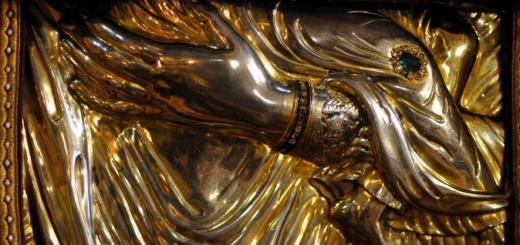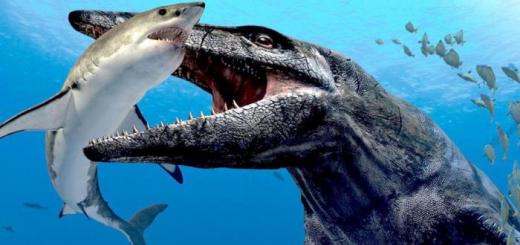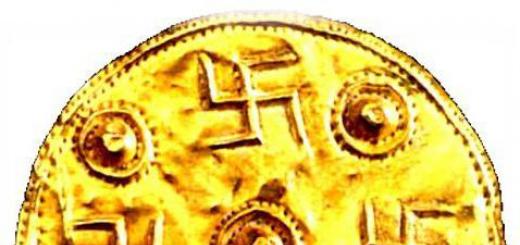When the dinosaur bone was first described in 1676, it was thought to be from an elephant, or possibly some kind of giant. More than a century later, scientists realized that such fossils were the remains of creatures called megalosaurs. They were depicted as stocky overgrown lizards. Then, in 1842, leading anatomist Richard Owen recognized megalosaurs as part of a whole new group of animals that he called dinosaurs, i.e., "terrible lizards."
Since then, about 700 different species of dinosaurs have been described, and new ones are found every month. Our ideas about them have also changed radically. The dinosaurs we know today are very different from the ones you read about in books as a child.
Myth #1: All dinosaurs were big.
The word "dinosaur" tends to conjure up the image of a giant, and of course, many of them were really big. Tyrannosaurus rex, for example, reached 12 meters in length and weighed 5 tons. Most likely, he was not even the largest of the carnivores. But herbivorous sauropods grew to titanic sizes. The huge Argentinosaurus is known only from a few bones found, but its size is estimated at up to 30 meters in length and weighs 80 tons. It was larger than any mammal on earth, with the possible exception of some whales. But dinosaurs were really unique. No other group of land animals before or after them could reach such sizes. 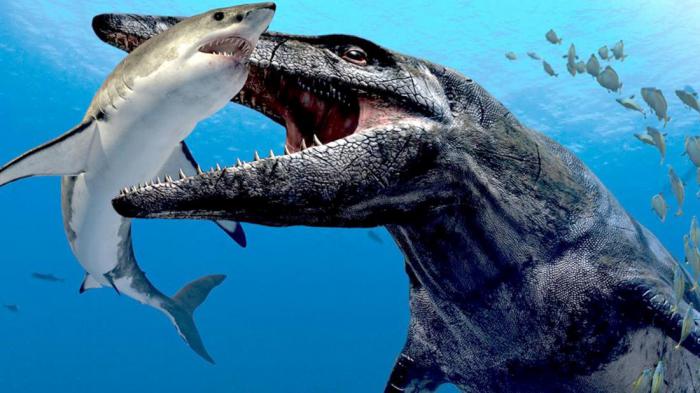
But not all dinosaurs were giants. The horned dinosaur Protoceratops was the size of a sheep. Velociraptor reached the size of a golden retriever. In the famous movie "Jurassic Park" they were made much larger to make the plot more terrible. In recent years, many small species have been discovered, no larger than a cat, rabbit or quail. These small species were probably more common than the giants. Most likely, the fact is that the massive bones of the tyrannosaurus rex are better preserved and easier to detect.
Myth #2: All dinosaurs were scaly.
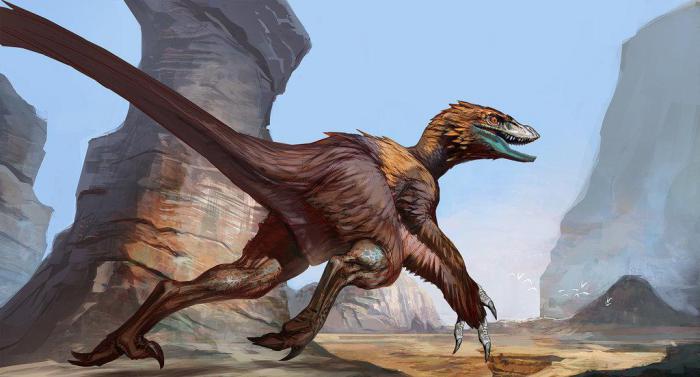
When dinosaurs were first discovered, it seemed obvious that they were somehow related to crocodiles and lizards, and therefore must have been scaly. And many dinosaurs really fit this idea. But in the 1970s, paleontologists suggested that some of them could be feathered, like their bird relatives.
Though thought to be fake at the time, a small carnivorous dinosaur was discovered in 1997 that was not covered in scales. Since then, feathers have been found on herbivorous ornithopods, fanged generodontosaurus, and many carnivorous species, including tyrannosaurids. This means that the T-Rex was most likely covered in feathers, not scales.
Myth #3: All dinosaurs were green or brown.
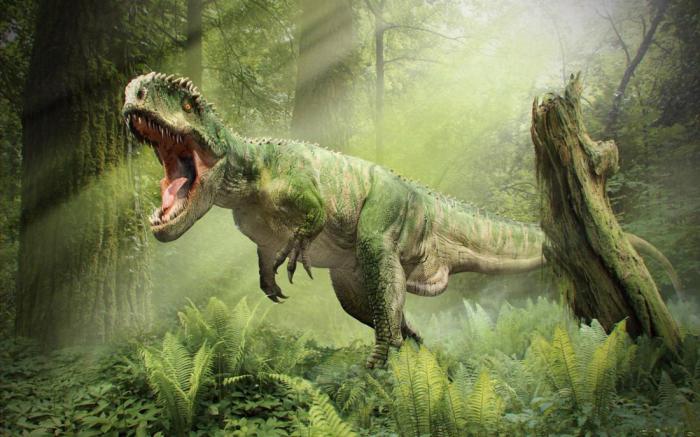
Early ideas about dinosaurs were based on solid colors that included depressing shades of grey, green and brown. If the Mesozoic era really was that boring, it's no surprise that everyone died out. But in reality, their color was more vivid, even flashy. Researchers have identified traces of melanin on dinosaur feathers. The same pigment gives color to scales, bird feathers and our hair. Analyzes show that dinosaurs had a wide variety of colors, including black, white and ginger. Some ornithopods even boasted the iridescent sheen of their feathers.
In addition, some dinosaurs had patterns consisting of spots and stripes, light bellies and dark backs. This coloration likely served as camouflage to help dinosaurs hide from predators or prey. But bright colors and noticeable patterns could also serve to attract the attention of the opposite sex.
Myth #4: Dinosaurs were bad parents

Most reptiles simply bury their eggs and leave, preferring to let their offspring take care of themselves. However, this behavior is very risky. A sea turtle, for example, must lay thousands of eggs in order for only a few to survive. Previously, scientists believed that dinosaurs used the same principle of dealing with offspring. But now we know that these are myths.
Living relatives of dinosaurs - birds and crocodiles - guard both eggs and cubs. This suggests that dinosaurs did the same. And now there is evidence. During an expedition in the Gobi desert, scientists found a dinosaur on top of a clutch of eggs. It was assumed that he died during the attack on the nest. This species was named Oviraptor, i.e. "one who steals eggs." However, several more skeletons were later found on top of the egg laying. It turned out that Oviraptor did not eat eggs, he guarded them.
Myth #5: Dinosaurs were doomed to extinction
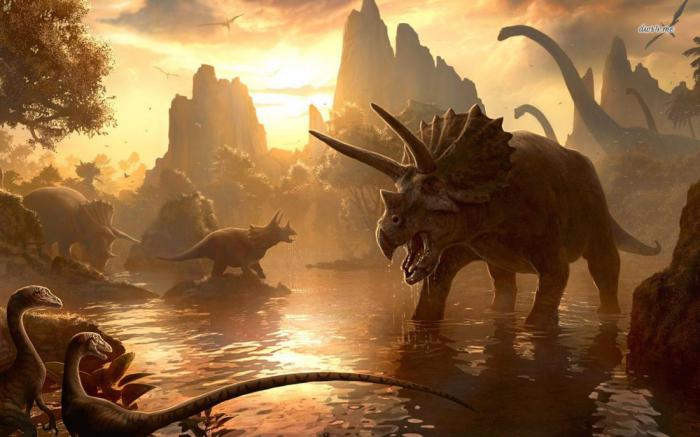
The extinction of dinosaurs has long been attributed to their inability to adapt to changing conditions. In fact, they lived for over 100 million years, and their remains have been found in North and South America, Asia, Europe, Africa, and Antarctica.
Although some argue that their species was in decline, fossils show that dinosaurs remained widespread and diverse until 66 million years ago, when an asteroid hit the Earth (in present-day Mexico). Debris from the collision rose into the sky and blotted out the sun, plunging the world into darkness. The extinction of the dinosaurs was not a deliberate plan of nature. It became a cosmic accident. If the asteroid were only a fraction of a degree off, dinosaurs, not humans, would still rule the planet.
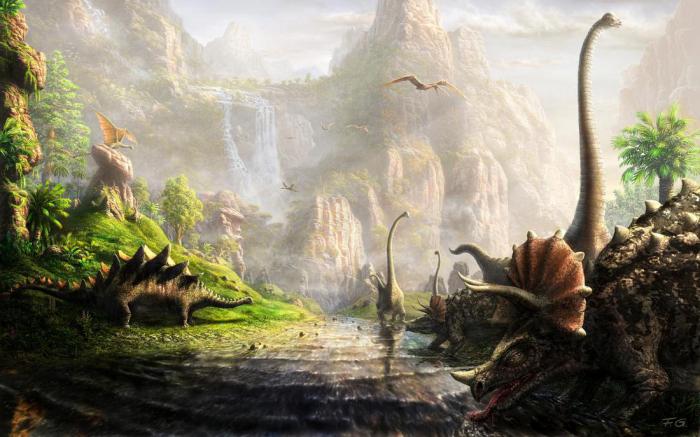
Myth #6: All dinosaurs are extinct.
The asteroid wiped out many types of dinosaurs, and the rest disappeared later. But some small feathered dinosaurs probably managed to survive. They were direct descendants of their carnivorous cousins. These feathered relatives not only survived, but thrived, growing into tens of thousands of bird species.






